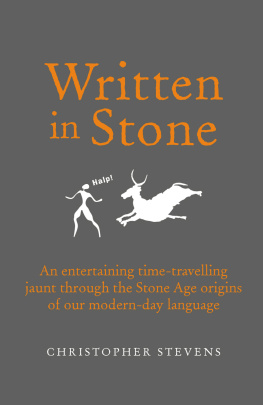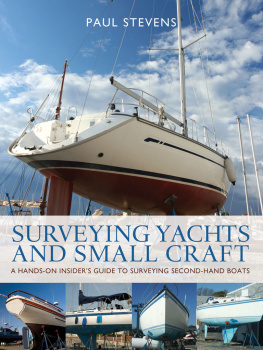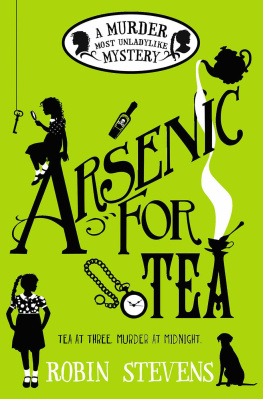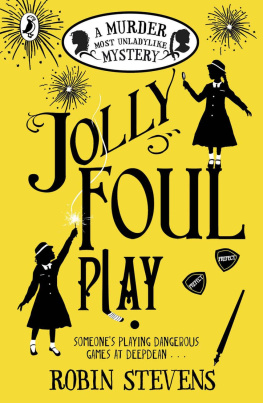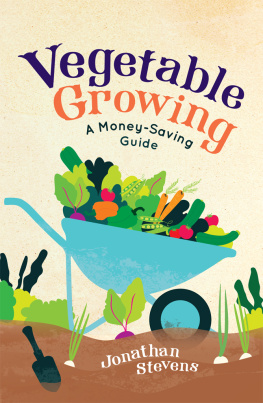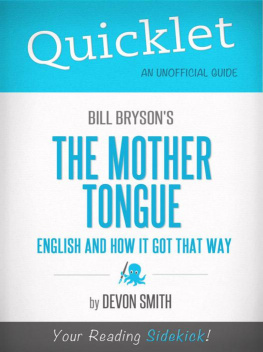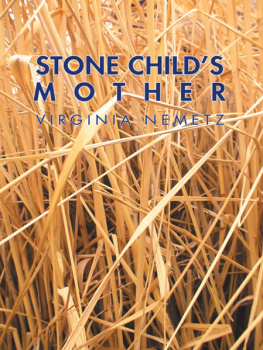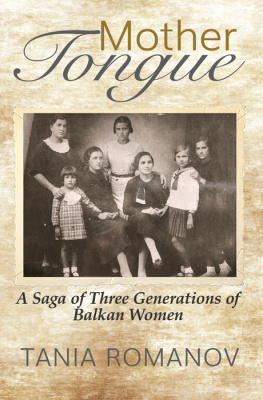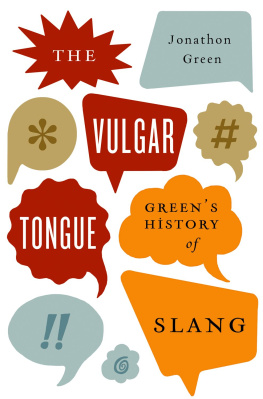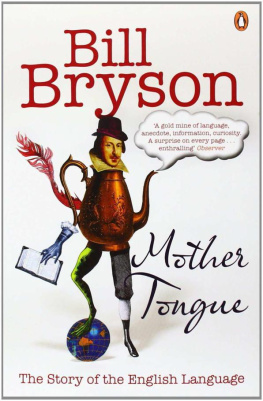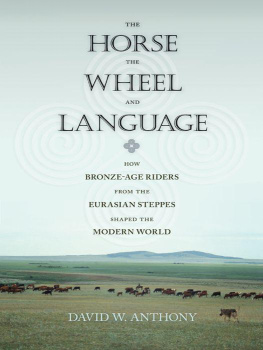Contents
About the Book
Why does it rain cats and dogs?
How do you dress up to the nines?
And why do we break wind?
In this extraordinary archaeological expedition, dig deep into the English language and uncover ancient riddles, astonishing trivia and hundreds of humorous and quirky connections between our favourite words.
About the Author
Christopher Stevens is a writer and journalist. His works include the bestselling mnemonics book THIRTY DAYS HAS SEPTEMBER (O'Mara, 2009) which became the number-one bestselling reference book on Amazon. His biography of the great comic actor Kenneth Williams, BORN BRILLIANT (John Murray, 2010), was a Radio 4 Book of the Week. Christopher worked at the Observer for 15 years before moving to the Daily Mail where he writes features, TV reviews and a daily column.

This ebook is copyright material and must not be copied, reproduced, transferred, distributed, leased, licensed or publicly performed or used in any way except as specifically permitted in writing by the publishers, as allowed under the terms and conditions under which it was purchased or as strictly permitted by applicable copyright law. Any unauthorized distribution or use of this text may be a direct infringement of the authors and publishers rights and those responsible may be liable in law accordingly.
Version 1.0
Epub ISBN 9780753550311
www.randomhouse.co.uk
1 3 5 7 9 10 8 6 4 2
Virgin Books, an imprint of Ebury Publishing,
20 Vauxhall Bridge Road,
London SW1V 2SA
Virgin Books is part of the Penguin Random House group of companies whose addresses can be found at global.penguinrandomhouse.com

Copyright Christopher Stevens 2014
Illustrations Shutterstock
Christopher Stevens has asserted his right to be identified as the author of this Work in accordance with the Copyright, Designs and Patents Act 1988
First published in Great Britain by Virgin Books in 2014
www.eburypublishing.co.uk
A CIP catalogue record for this book is available from the British Library
ISBN 9780753555217
This book is for my son James, who has been listening to me talk about Indo-European words for years.
LUBH, PA
Introduction
SAY THE WORD pu. Then say pe, and think about how your face is moving as you form the syllables. Now say mei, and feel the different shape your mouth makes.
This is how language began. The earliest words in our modern vocabulary date back at least 8,000 years, and they describe themselves: we can work out what the words meant by their sounds, and by the shapes our lips form when we say them.
Pu: say it again. Your mouth is pursed, your nose is narrowed. Theres an expression of distaste on your face. You are blowing out a breath, as if to dispel a bad smell. In the Stone Age, pu meant exactly what it means today poo!
Pe is quite different. It starts with the lips together, and then separates them with a faint pop. Pe means open. The ancient sound is at the core of the modern word: open.
When you say mei, your mouth stretches from side to side, before you open wide and show your teeth. Mei makes you do exactly what youre saying it means smile. And once again, the old sound is at the centre of todays word: smile.
This is how Indo-European, the most successful language in world history, began with intuitive sounds that really mean what they say.
Hundreds of these single-syllable words used by our ancient ancestors are at the heart of English. These sounds shape our language; the ideas behind them have moulded the modern world. In fact, half the worlds population speaks a language that has evolved from a single, prehistoric mother tongue. It was never written down, yet many of its words are unchanged or barely different from their Stone Age sounds.
These words didnt arrive from the source language straight into English. It has been a long journey across many millennia. But whether our modern vocabulary arrived by way of the classics, the Germanic tribes or from the Viking north, all of them share a common root in a language spoken on the Black Sea steppes, more than 4,000 years before the Roman Empire.
They are the DNA of English: the genetic basis of everything we speak and write.
our English tongue, a gallimaufry [sic] or hodgepodge of all other speches [sic] is how the poet Edmund Spenser described the language in 1579. Whenever we string a sentence together, were using words that have been imported from many countries and cultures from Latin and Greek, from Brythonic, Pictish and other Celtic tongues, from Saxon, from Norse, from French, Spanish, Dutch and German, and even from Slavic, Persian and Indian languages.
But the common ancestor of all these sources was first spoken in Stone Age times, on the steppes of central Asia up to 8,000 years ago. It flourished and evolved for around 4,000 years, even though it was never written down, and spread from the shores of the Black Sea across almost all of Europe and much of Asia.
This ancient mother tongue was spoken by Neolithic tribes who domesticated horses and cattle, invented the wheel and the plough, told stories, grew wheat, made wool and even collected honey. But if they had a name for the language, it has been lost. Archaeologists and linguists refer to it as Indo-European, or sometimes Proto-Indo-European.
Some of their words have survived unchanged to the present day, such as thaw and path. Many more are virtually the same: gat meant to get, halp to help, dars to dare, lig to lick, dran to make the droning noise of a bee, mur to murmur and wargh to worry. Frus was a frost, mald was mild, sniw was snow and sparg was a spark.
Even the most coarse words in English, the ones we sometimes describe euphemistically as good old Anglo-Saxon words, are in fact thousands of years older, barely changed since Stone Age man first started cursing.
By discovering these primal words, the building blocks of everything from Latin to Sanskrit and Welsh to Gujarati, we gain an entirely fresh perspective on how we speak and write. The Neolithic syllables have evolved to spawn numerous new words that share common themes, like factions or families within each language.
For more than 200 years, Indo-European has been a subject of intense study for linguists and anthropologists, including the Brothers Grimm and the author of the first dictionary of etymology, Walter Skeat. The origins of the tribes who spoke it are the subject of fervent scholarly debate and scientific literature.
But to the average enthusiast of words and popular science, this entire topic is unknown. Just about nobody outside the arcane world of linguistic archaeology is familiar with the hundreds of prehistoric monosyllables that have been identified at the roots of modern vocabularies such as gla. It means to glow, and is re-echoed in
Next page
